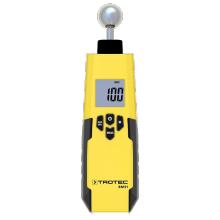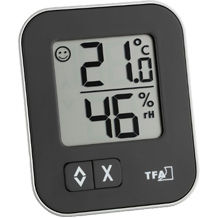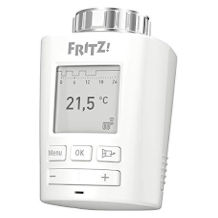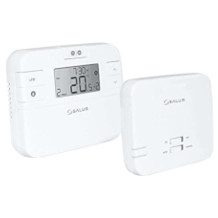Laser level purchasing advice: how to choose the right product
- What You Need to Know
- Cross line lasers produce two laser lines that cross at a 90 degree angle.
- They are ideal for aligning objects such as pictures or wall cabinets.
- Self-levelling laser levels automatically produce plumb lines.
- Green laser lines are usually more visible to the human eye than red ones.
Simple, fast and precise
Assembling storage options such as wall shelves requires patience and precision. After all, the pieces of furniture must be fixed completely straight to the wall so that decorative objects or books do not slip in one direction. Pictures are also best hung straight on the wall. Classically, a spirit level is used to guarantee that shelves and pictures are plumb. Users take the measuring device, a pencil and laboriously mark the measured points. In the meantime, there are modern solutions that are much easier to handle: With laser levels, measurement is done at the touch of a button. This not only minimises the workload, but also saves you a lot of time. In addition, measurements by laser are more accurate than manually by spirit level.
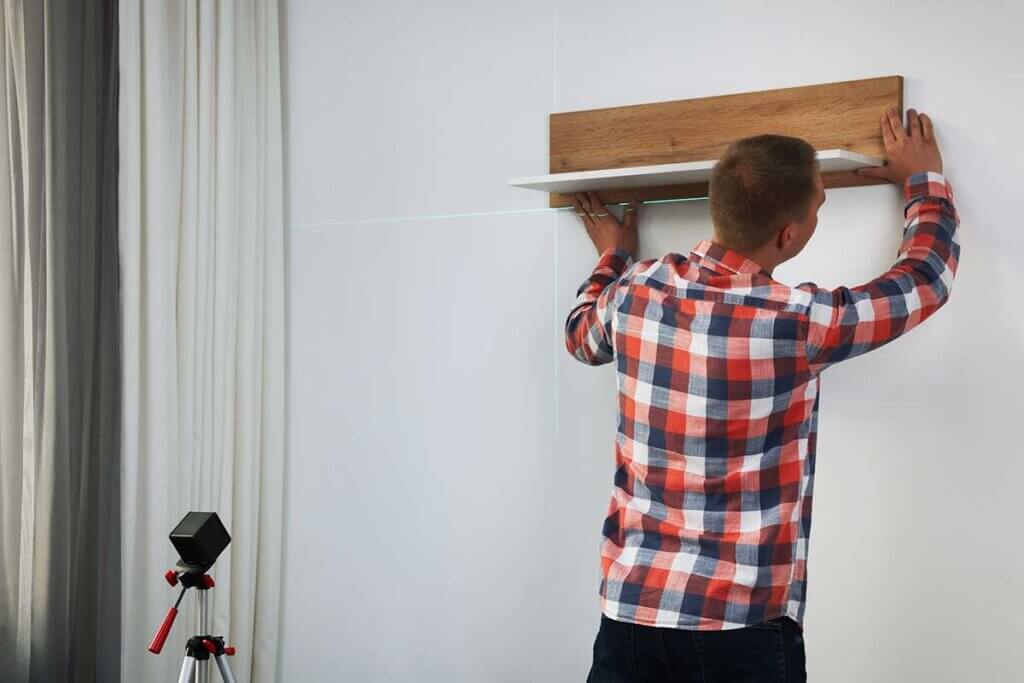
Cross-line lasers generate a horizontal and a vertical laser beam that are positioned at 90 degrees to each other, so that together they form a cross. This is done by a laser diode that creates two laser dots at a time and widens them to form a line. In some models, either one laser beam or both extend completely around the unit, irradiating all walls. They are known as 360-degree lasers. Cross-line lasers are usually positioned using a tripod or wall clamp.
Cross line lasers and related measuring devices
In the craft sector, cross-line lasers are important for numerous tasks. For example, they help to lay tiles or pipes evenly and to raise walls. In addition to cross-line lasers, there are other positioning lasers, including line lasers, which generate only one line, and dot lasers, which mark the desired locations with a dot.
Alternatively, there are so-called rotating lasers that use a rotating laser diode to project a single line at a 360-degree angle to cover the entire area.
What matters when buying
For laser levels to really make work easier, it is essential that they produce lines that are as precise and clearly visible as possible. Ideally, they should align themselves within a very short time.
Self-levelling
Fast, comfortable measuring is not possible with simple manual laser levels. With such designs, the lasers are not automatically straight. Users have to align the device themselves, which then requires additional measuring tools such as a spirit level or protractor.
Self-levelling laser levels, on the other hand, adjust themselves. In order to align the lasers optimally, they have a swivel joint inside on which a pendulum swings, as well as a magnet on the underside. As soon as users switch on the device, the pendulum moves downwards and automatically plumbs itself. The magnet accelerates the swing. Since the pendulum and the electronics are connected to each other, straight lasers are created.#
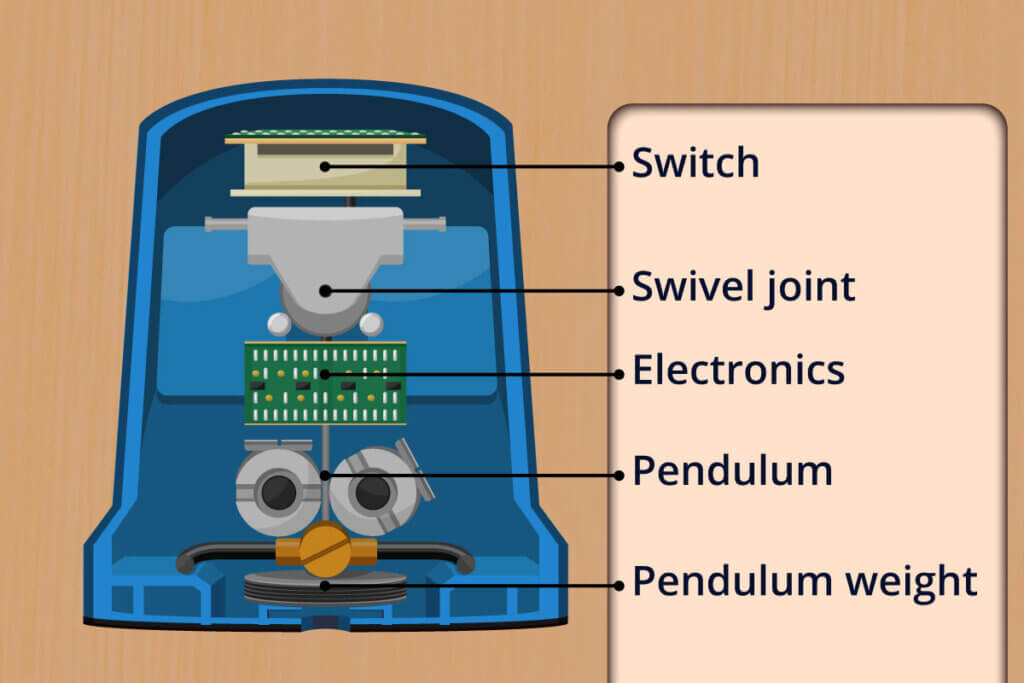
Even if the measuring instruments are placed on uneven ground, the self-levelling feature ensures good results. However, if the surface is too uneven, alignment is not always possible because the pendulum hits the inside wall and can no longer align itself accurately. In this case, the laser level flashes or switches off.
If inclined lines are also desired, for example to build a staircase, a so-called locking or tilting function is recommended. This prevents the pendulum from swinging and effectively switches off the self-levelling function.
Visibility
Even the most accurate laser levels are only helpful if the laser lines are clearly visible. Visibility depends on the strength of the light, the ambient lighting and the surface on which the lasers are shining. The more light the surface absorbs and the brighter the ambient light, the higher the light output of the lasers must be.
On transparent or translucent materials such as glass, the lines are barely visible. Matte black surfaces require very powerful lasers because they absorb the most light. Wet, dusty or smeared surfaces cannot reflect light evenly.
In terms of ambient light, the laser should ideally be brighter. However, this is not feasible in direct sunlight. Provided the laser level is not exposed to direct sunlight, some are even suitable for use in daylight. Nevertheless, it is helpful to cover the windows with blinds, roller blinds or light protection film.
In dim light or in the shade, a low light output of 1 to 5 milliwatts is usually sufficient. If, on the other hand, you want to measure under normal artificial light, you need an average of 10 to 15 milliwatts – and sometimes more for daylight lamps. Actual daylight requires high values of about 30 to 40 milliwatts.
In the meantime, there are not only measuring devices with red, but also with green laser light. These are often more expensive than equivalent crossline lasers with red hue, but the eye can perceive the green better even with the same light intensity.
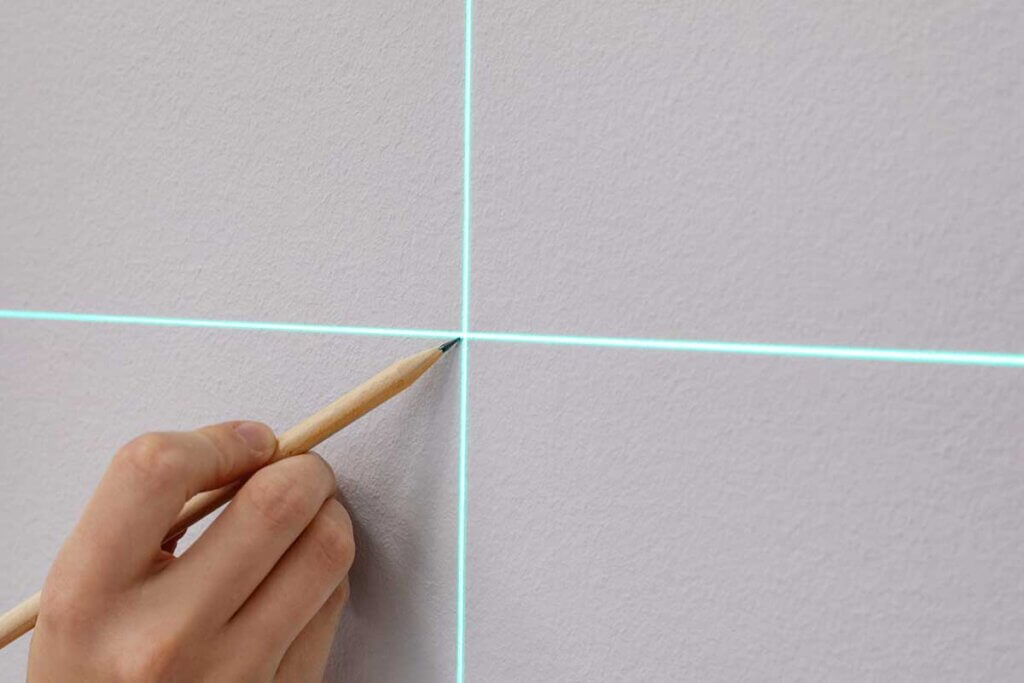
Range
The maximum range of the laser level you need depends on the size of the area to be measured. For the laser to be bright enough, the range should be high enough to cover the entire length or width of the area. Professional devices with ranges of up to 50 metres tend not to be necessary for private users. For them, between 10 and 15 metres is sufficient to work in both small and larger rooms. With 360-degree lasers, the range corresponds to the circumference. That is, the distance between the wall and the housing is half the range.
However, as a consumer, it is not possible to determine how the manufacturers measured the range. Two units with the same range can have very different brightness levels. One possible reason is that the value for one device was measured in dim light and for the other in daylight. Thus, for example, a laser with a range of ten metres may be brighter than a product with a range of 15 metres. Therefore, it is advisable to seek independent tests and product reviews of the desired device to get an idea of the range of the lasers.
Measurement accuracy
Although laser levels deliver far more accurate results than manual measurements by spirit level, there are always minimal deviations. The greater the distance to the wall, the greater the deviations. It is quite all right if the measurement deviates by about five millimetres at a distance of 10 to 15 metres. Such small differences are hardly perceptible to the naked eye. Another indication is the so-called levelling accuracy. It indicates by how many degrees the results deviate from the right angle. The SK106GD battery-powered cross line laser from Makita, for example, has an accuracy of three millimetres at a distance of ten metres and a levelling accuracy of four degrees.
Power supply
Either batteries or rechargeable lithium-ion batteries provide the necessary power. Versions with batteries have an average runtime of 15 hours. AA or AAA batteries are used. They are inexpensive and already available in most households. For occasional mounting of pictures or wall shelves, these runtimes are perfectly sufficient.
There are devices with built-in batteries as well as with replaceable batteries. Built-in batteries have the disadvantage that you cannot immediately continue working on the project when they are empty. They must first be charged for a few hours. Two exchangeable batteries, which you always change when the capacity of one of them is used up, enable a smooth workflow. For time-consuming projects such as laying tiles, it is advisable to have several rechargeable batteries or batteries to hand to avoid long charging breaks.
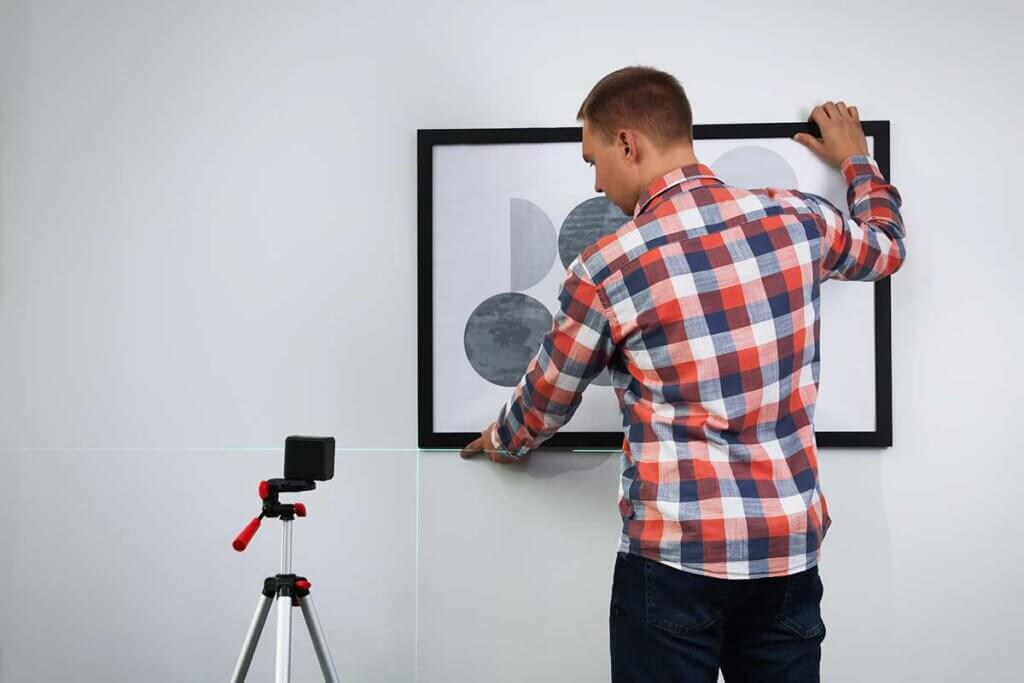
Laser class
For products that work with lasers, manufacturers are obliged to assign them to a laser class. The classification is made according to the European standard EN 60825-1 and indicates how dangerous the work with the respective laser is. The more powerful the laser, the more likely it is to cause damage or impairment to health. Class 1 devices are harmless thanks to their low power or effective protective housing. Class 4 laser products, on the other hand, damage both the eyes and the skin.
Cross-line lasers are usually class 2. The visible light produced by products in this class has a wavelength of 400 to 700 nanometres. It is only dangerous to the eyes if they are directly illuminated for more than a quarter of a second.
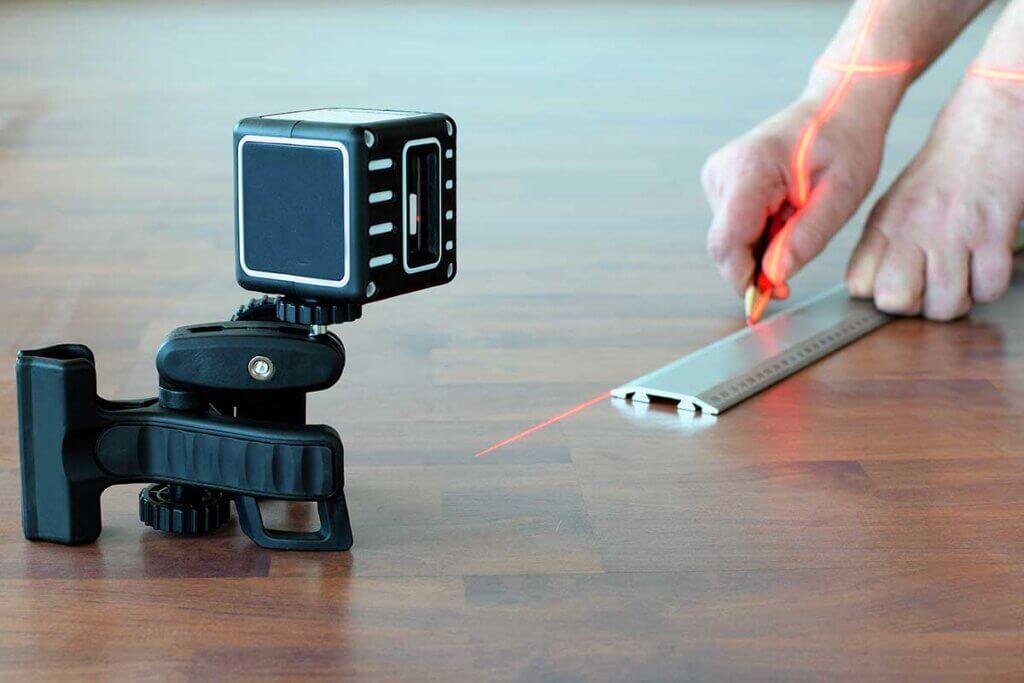
Nature
Although laser levels are rarely used for outdoor projects, manual work is not dirt-free or dry. Basic protection against dirt and moisture is therefore essential to ensure the functionality of the measuring instruments. Resistant laser levels often fall into protection class IP54. This means that the devices are protected against dust and contact and can withstand splash water from all sides. This is sufficient for use in the home.
Another aspect is the temperature range in which laser levels function perfectly. However, since this range is often very wide, you only have to worry about the laser in icy winters and on hot summer days. Most products can tolerate a temperature of minus 10 degrees Celsius. The maximum temperature is often between plus 40 and 50 degrees Celsius.
Accessories
To align wall shelves or pictures, the laser level must also be able to project the lines at the correct height. This requires either an adjustable tripod or a suitable wall mount that can be mounted at different heights. For applications close to the ground, small stands or clamps are sufficient. Some products even come with several mounting options. Otherwise, manufacturers offer the accessories for purchase separately. For those who use the measuring device for different tasks, several mounts and stands are quite useful.
As long as a 1.4-inch thread is used to hold the laser level, a special tripod from the manufacturer or from the DIY store is not necessary at all. The thread is also commonly used in other areas, for example to attach cameras to tripods. To have as much choice as possible when it comes to accessories, it is advisable to choose a measuring device with 1.4-inch threads.
There are also a number of tools to make the laser beams more visible, including laser goggles, laser target boards and receivers. Such tools are ideal for manual work in strong ambient light. In laser glasses, the lenses have the same hue as the lasers. This enhances the optical contrast between the laser and the surroundings. Make sure that the tint of the glasses matches the colour of the laser lines.
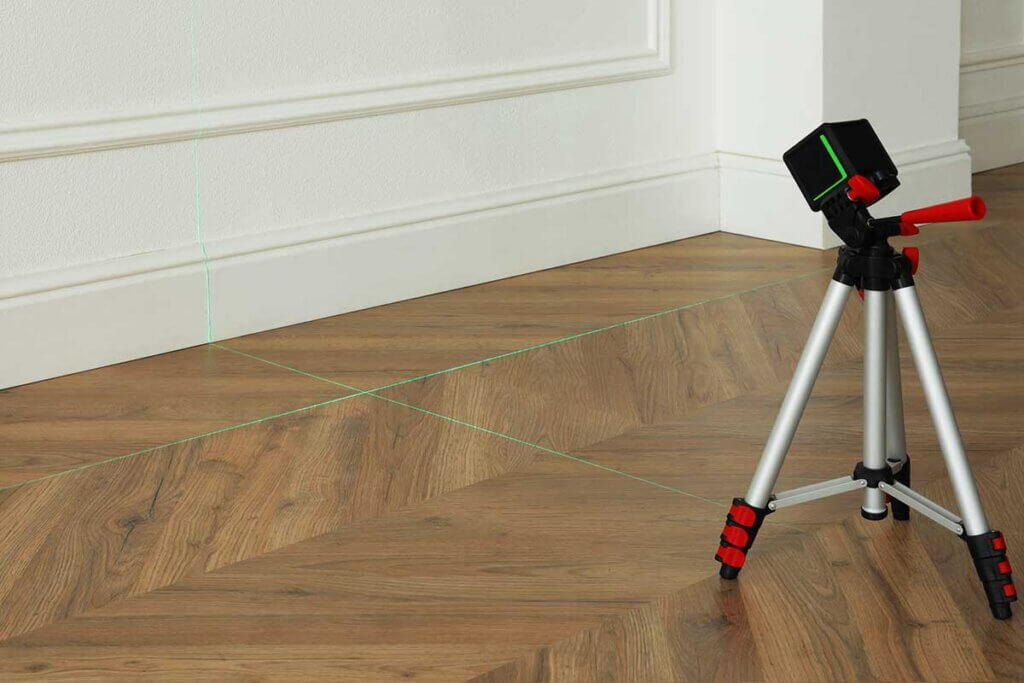
Both receivers and laser targets are excellent to use with the glasses, as they come in front of the object the laser is to shine on. However, while the main purpose of targets is to precisely align objects, receivers are there to increase the range. For receivers to be usable, laser levels must be compatible with them.
To save space when storing the device and its accessories, a bag is useful. It not only protects the utensils from dirt and moisture, but also allows them to be transported to different locations.
Practical functions
High-quality levelling laser levels are equipped with several practical functions. These include, for example, a pulse mode that changes the frequency of the laser to enable the use of receivers. However, the mode also consumes more power than using it without a receiver.
Another helpful feature is plumb points. These are laser points that are projected either only onto the floor or additionally onto the ceiling. This allows craftsmen to mark the exact position of the laser level during the measurement, for example. In addition, the laser dots are suitable for attaching ceiling lamps and other objects to the ceiling.
Common cross-line lasers have only two axes or project only two laser lines. However, there are also products with three axes. Often, there is another vertical line that runs along the sides of the housing. A 360-degree cross-line laser level with three axes thus produces laser crosses on all sides.
Some laser levels have a switch that can be used to turn off one of the lasers if necessary. The advantage of this is that all the energy is concentrated on the remaining laser, so it is often easier to see.


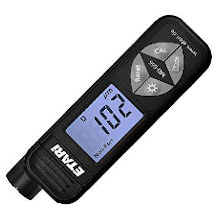
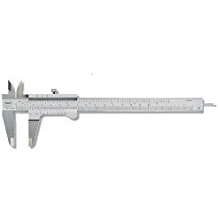
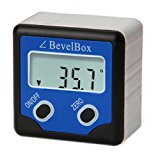
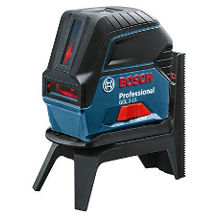

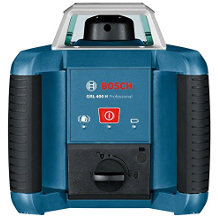












 7,735 reviews
7,735 reviews

